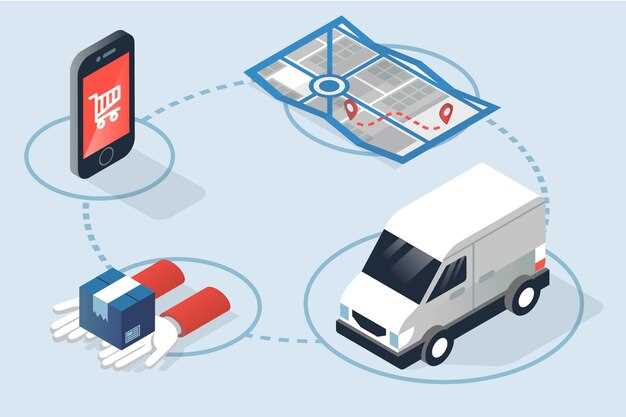
The global shift towards greener transportation has led to a surge in demand for electric vehicles (EVs). As manufacturers ramp up production, efficient shipping strategies become crucial in meeting consumer expectations and maintaining competitive edge. Understanding the intricacies of transporting EVs is essential for stakeholders across the supply chain, from manufacturers to logistics providers.
One of the primary challenges in shipping EVs lies in the battery systems that power them. These batteries not only impact the weight and dimensions of the vehicles but also require strict adherence to safety regulations during transport. Proper handling and specialized shipping methods are essential to mitigate risks associated with battery transportation, such as fire hazards and damage during transit.
Furthermore, the integration of advanced technologies and innovative logistics strategies is vital. Companies must focus on optimizing routes and employing effective packaging solutions that enhance safety and efficiency. By investing in training and proper equipment, stakeholders can ensure the secure delivery of EVs while minimizing delays and potential losses, ultimately contributing to a more sustainable automotive industry.
Analyzing Key Logistics Considerations for EV Transportation

The transportation of electric vehicles (EVs) involves a unique set of logistics considerations that are crucial for ensuring the safe and efficient delivery of these advanced automotive products. One of the primary factors to consider is the specific protocols that govern the handling and shipping of EVs, particularly regarding their batteries.
Battery safety is paramount during transportation. Lithium-ion batteries, commonly used in EVs, can pose risks if not handled according to established safety regulations. Regulations set by organizations such as the International Air Transport Association (IATA) stipulate stringent guidelines to mitigate fire and explosion hazards. Therefore, understanding these protocols is essential for logistics providers to minimize risks associated with battery damage or incidents during transit.
Another critical consideration is the selection of appropriate transportation modes. The choice between road, rail, air, or sea must take into account the type of EV, battery specifications, and destination logistics. For instance, transporting EVs by air may expedite delivery but also requires adherence to more stringent safety regulations due to the battery’s hazardous materials classification. Similarly, road transportation may necessitate specialized vehicles equipped to handle the weight and dimensions of EVs.
Moreover, it is important to consider the battery charging needs before transportation. Ensuring that the vehicles are delivered with adequate charge levels is vital for minimizing operational downtime upon arrival. This requires precise coordination with charging infrastructure at both the shipping origin and destination points.
Additionally, tracking and monitoring technologies play a significant role in EV logistics. Implementing real-time monitoring systems can help logistics providers maintain transparency throughout the shipping process, ensuring that the vehicle’s condition and battery status are consistently observed. This data can help in troubleshooting potential issues before they escalate into significant problems.
In conclusion, the process of transporting electric vehicles necessitates a thorough understanding of key logistics considerations, including battery safety protocols, transportation mode selection, charging requirements, and state-of-the-art tracking solutions. By addressing these factors, logistics companies can facilitate the successful delivery of EVs while ensuring compliance with safety regulations and customer satisfaction.
Implementing Safety Protocols for EV Shipping and Handling

Transporting electric vehicles (EVs) requires precise safety measures due to the unique elements associated with their batteries. Effective protocols not only ensure the safety of workers but also protect the vehicles and the environment during the shipping process.
Key safety protocols for shipping and handling electric vehicles include:
- Battery Inspection: Before shipping, a thorough inspection of the battery should be conducted. This includes checking for physical damage, ensuring correct charge levels, and confirming that battery management systems are functional.
- Proper Packaging: EVs should be packaged in accordance with local and international guidelines for transporting hazardous materials. This often involves using specific containment methods to prevent leakage or combustion.
- Training Personnel: All personnel involved in EV handling must undergo training specifically tailored to dealing with electric vehicle batteries. This training should cover emergency response procedures, handling techniques, and equipment use.
- Signage and Labeling: Proper label placement on shipping containers is essential. Labels should clearly identify the presence of lithium-ion batteries and provide instructions on handling procedures.
- Emergency Response Protocols: Detailed emergency response plans should be established to handle potential incidents involving battery fires or leaks. This includes having appropriate firefighting equipment readily available.
Additionally, compliance with transportation regulations set forth by organizations such as the International Air Transport Association (IATA) and the Department of Transportation (DOT) is vital for safe shipping practices.
By implementing these safety protocols diligently, the risks associated with shipping electric vehicles can be minimized, ensuring a secure and efficient logistics process.
Understanding the Impact of EV Battery Regulations on Shipping
The transportation of electric vehicles (EVs) involves specific regulations regarding battery handling and shipping. These regulations aim to ensure safe transportation and mitigate risks associated with lithium-ion batteries commonly used in EVs. Understanding these protocols is essential for manufacturers, shippers, and logistics providers.
Battery Safety Standards are at the forefront of shipping regulations. Organizations such as the International Air Transport Association (IATA) and the United Nations (UN) have established guidelines that dictate safety measures to minimize hazards during transport. Compliance with these safety standards is crucial for preventing incidents like fires or explosions that can occur if batteries are damaged or improperly handled during shipping.
Packaging guidelines are an integral part of these regulations. Batteries must be packed in specialized containers that can withstand impacts and environmental factors. This packaging not only ensures the safety of the battery but also protects personnel involved in the shipping process. Shippers must follow specific labeling protocols to inform handlers about the potential hazards associated with the cargo.
The impact of regulatory compliance on shipping timelines and costs cannot be underestimated. Companies may need to invest in training their personnel to handle batteries safely, as well as in proper packaging materials. These investments, while initially high, can lead to reduced incidents and better overall safety, ultimately benefiting the industry in the long term.
In summary, EV battery regulations significantly influence the shipping landscape. Understanding and adhering to these protocols is vital for ensuring safety and efficiency in the transport of electric vehicles, thereby fostering a stable environment for the growing EV market.



